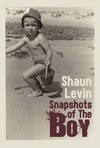Evidence of the Attempt
Writing happens in the grasping for language, the clinging and clawing to find the precise words. At the heart of the attempt is the knowledge that we’ll fail. Writing is translating, is approximation. When that attempt at likeness shows, when we see, but more than see, when we feel that attempt, writing becomes exciting. Evidence of that effort, that endeavour doomed to fail, because most of life does not happen in language, is where the excitement of writing exists, and because of that in the reading, too.
The tunnel of translation runs from the body to the page. You can feel that electric wire, that conductor of the current, evidence of the struggle to put into words. First comes the world, then come language. First the body, then language, first hunger, then language, first love. To write is to get as close as possible to the point before sensation turns into words. There was the visual, there was the sensation. Then language tries to do its work, and we cling to our faith that the right words can be found, the precise words. That’s when it gets exciting, when faith and knowing work side by side. Evidence of the mind in its belief and trying.
Drawing and painting is exciting when it’s not precise, when there’s evidence of the mind at work, evidence of the body free of its learning, its training, when the training has been absorbed and forgotten and all there is is freedom. Language is always a learned thing, never entirely free, grappling to be precise and to forget itself. A tension between going towards the experience where there’s no language and yet relying on language to get there. Just one more step, keep going, and language will disappear and be pure experience, pure sensation, pure colour, pure shape, taste, form.



